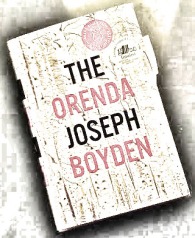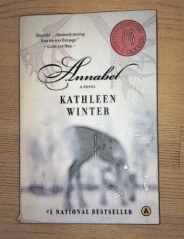 I have been wanting to read Joseph Boyden’s new book since I heard all the buzz about its release last fall. Its place on the Canada Reads 2014 list gave me another good reason to buy it.
I have been wanting to read Joseph Boyden’s new book since I heard all the buzz about its release last fall. Its place on the Canada Reads 2014 list gave me another good reason to buy it.
This book is from the perspective of three people and each chapter switches perspectives. The novel begins with the capture of Snow Falls (an Iroquois girl) and Father Christopher (a French Jesuit) by Bird, a respected Huron hunter and warrior. The novel explores the relationship of these three as Bird tries to adopt Snow Falls as his daughter and assimilate her into the Huron tribe, and the Crow (as he is referred to by the Huron) tries to convert the sauvages. With the introduction of these two people into the community, Bird sets into motion a series of events which jeopardizes his people’s existence. The bad blood between the Iroquois and the Huron deepen, and the presence of the Iron People (the French settlers) bring war, sickness, and a threat to the Aboriginal way of life.
This book felt like a warm cup of coffee on a cold day; so good I just kept my hands wrapped around it taking little sips and enjoying the full flavour it offered. I have been busy so I had to make do with enjoy little bits of this novel at intervals throughout the week; but each time I sat down, I was swept up into the incredible story and world that Boyden creates. It truly is a powerful tale of love and hate, and an exploration of a historical collision of cultures.
What I appreciated most was how Boyden approached the cultures and the historical situation. We all know how the story ends: the Aboriginal cultures are slowly wiped out by disease, war, and cultural dictatorship of the French and the British. And yet when Boyden describes what Father Christopher brings to the Huron villages and we see the historical disintegration begin, there is no blame placed. There is a definite sense of sadness as he describes the desolation of a nation, but he simply describes it. No blame. No anger. He lets the Crow vocalize his thoughts and his intentions (no matter how misguided or destructive I judge them to be) without putting any negative tone or judgement wording on them.
Boyden allows the same freedom of expression and explanation to Bird and Snow Falls. For example, when Boyden details the tortures that the Aboriginal tribes use on their captives (something I found difficult to read and I hear Boyden say was difficult to research and write), Bird (and even the Crow) explains the cultural reasons for these actions. These cultural idioms are explained not just left for us to associate as simply a savage way.
This respect shown to the stories of the French Jesuit and the Huron people took the focus off the blame game in this tragedy, and placed the focus on the people. I felt like I was connecting with both cultures and understanding their journey while deeply lamenting the destination. This book is full of beautiful stories about people, their capacity as communities and a celebration of their beliefs. And even with the sadness that permeates this ending, I left feeling respect for Bird, Snow Falls and Father Christopher, and hope that even with a disastrous ending, a life-filled future is still possible.
5/5 bacon strips
(I plan on re-reading “Year of the Flood” by Margaret Atwood and “Half-Blood Blues” by Esi Edugan in preparation for the Canada Reads 2014 debate on March 3-6 2014. I will then put forward my recommendation what Canada should read; which book I think has the capacity to change our nation. Just in case anyone wants to know.)

